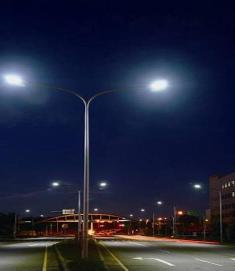It is exciting to see that more and more businesses and cities are replacing their old energy-wasting lighting fixtures with LED lamps. What is even more exciting is the support and funding that some projects are receiving from the government and other programs around the United States! In Menomonee Valley near Milwaukee, Wisconsin, Potawatomi Bingo Casino is replacing 1,700 fixtures in its parking garage with BetaLED LED fixtures. The project is costing $918,000, but was made more affordable by a $500,000 grant from the United States Department of Energy and a financing package with Uihlein Electric and Godfrey & Kahn. The casino is hoping to save $120,000 annually on maintenance and $101,000 annually on energy, for a combined total of $221,000 savings. They are also looking into installing LED lighting inside of the casino and in slot machines.

In Pittsburgh, Pennsylvania, Governor Edward Randall awarded an $816,105 grant to begin replacing all city lights with LEDs. During phase one of the retrofit, the city will replace 40,000 high pressure sodium fixtures with LEDs. They expect to save $110,000 on electricity and maintenance. The new lighting will save taxpayers over $2.5 million each year. Funding for this project is coming from the $6 million Duquesne Light Settlement from 2006 when the power rates increased, and from the governor, who gave $20.5 million in grants on September 1 to support clean energy projects indoors and outdoors. The city of Wilbur, Nebraska will be replacing 150 high pressure sodium fixtures with LEDs in November. They are receiving a $122,145 grant from the United States Department of Energy’s Energy Efficiency and Conservation Block Grant and $30,536 in local matching funds for a combined total of $152,681. The city of Cary, North Carolina is replacing 34 high pressure sodium fixtures with LEDs in order to save $5,000 annually on energy. This project is being funded by the American Recovery and Reinvestment Act.
We are happy to see government and other program involvement and support in these LED retrofits. The more funding they can give to cities looking into retrofits, the more motivated the cities will be to look into LED lighting and begin the LED revolution. Not only will it save cities money in the end, but the installation of LEDs will reduce carbon emissions and make this a safer, more sustainable planet.
